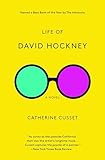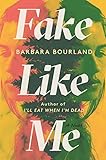 This summer, I published The Blue Period, a novel that follows a young Pablo Picasso from humble beginnings in Spain to turn-of-the-century forays in Paris, where the budding painter sought to define an identity apart from the pressure of his father—also an artist—until tragedy struck. It was during Picasso’s resulting bout with depression in his late teens and early 20s that he set out to render society’s forgotten souls in nocturnal shades, leaving us with such lonely and moving canvases as The Old Guitarist, The Tragedy, Femme aux Bras Croisés, La Soupe and La Vie. While this story arc doesn’t cover all of the prolific but controversial figure’s long life or many ups and downs—he died in 1973 at 91 years old—it explores how early setbacks and trauma paved the way for a post-adolescent outpouring of creativity and empathy, before Cubism catapulted Picasso to almost inconceivable fame.
This summer, I published The Blue Period, a novel that follows a young Pablo Picasso from humble beginnings in Spain to turn-of-the-century forays in Paris, where the budding painter sought to define an identity apart from the pressure of his father—also an artist—until tragedy struck. It was during Picasso’s resulting bout with depression in his late teens and early 20s that he set out to render society’s forgotten souls in nocturnal shades, leaving us with such lonely and moving canvases as The Old Guitarist, The Tragedy, Femme aux Bras Croisés, La Soupe and La Vie. While this story arc doesn’t cover all of the prolific but controversial figure’s long life or many ups and downs—he died in 1973 at 91 years old—it explores how early setbacks and trauma paved the way for a post-adolescent outpouring of creativity and empathy, before Cubism catapulted Picasso to almost inconceivable fame.
Much to my delight, it turned out the book I’d been laboring on for years joined a bumper crop of künstlerroman that debuted around the same time. German lends us this mouthful of a word for an “artist’s novel.” Works in this tradition include not only stories of painters, sculptors and photographers, but also ones about writers, dancers, and musicians. Irving Stone’s The Agony and the Ecstasy, Willa Cather’s The Song of the Lark and Richard Wright’s Black Boy are classics. Like other coming-of-age tales, this type of narrative—they may be fiction, nonfiction, or a hybrid—typically begins with the protagonist’s youth, but then künstlerromane go on to detail the experiences that molded their subjects into artists. These books have helped show the world the many paths to creativity, while often adding context to well-known artists’ lives. Art affects us deeply, and we want to understand how its practitioners learned to wield such an enormous power to make us feel.
Below are a few highlights from the new arrivals in this intriguing genre:
Life of David Hockney by Catherine Cusset (translated by Teresa Fagan)
 At a recent event in New York, Catherine Cusset explained to her audience how in her native France the divide between what constitutes a novel and what can be considered biography is much less stark than in the United Sates. By presenting Life of David Hockney as a third-person omniscient narrative, which shares with readers the deepest thoughts and feelings of a famous living artist—even though she’d never spoken with him before publication—the author demonstrates just how unfettered she is by rigid categories. The result is an inviting and entertaining portrait that reveals how a working-class boy from Yorkshire, born on the eve of the Second World War, defied art’s trend toward abstraction to make figurative works that would help reinvigorate painting and command astronomical prices. Cusset’s brisk, engaging novel manages to leave readers with a sense that they know Hockney more intimately than if they’d try to plow through an art history tome.
At a recent event in New York, Catherine Cusset explained to her audience how in her native France the divide between what constitutes a novel and what can be considered biography is much less stark than in the United Sates. By presenting Life of David Hockney as a third-person omniscient narrative, which shares with readers the deepest thoughts and feelings of a famous living artist—even though she’d never spoken with him before publication—the author demonstrates just how unfettered she is by rigid categories. The result is an inviting and entertaining portrait that reveals how a working-class boy from Yorkshire, born on the eve of the Second World War, defied art’s trend toward abstraction to make figurative works that would help reinvigorate painting and command astronomical prices. Cusset’s brisk, engaging novel manages to leave readers with a sense that they know Hockney more intimately than if they’d try to plow through an art history tome.
Basquiat: A Graphic Novel by Paolo Parisi
 In vividly drawn panels of red, electric yellow, green, and indigo, Paolo Parisi’s Basquiat makes striking use of the graphic novel medium to immerse readers in the story of how a young graffiti artist from Brooklyn emerged to become one of the rising stars of the 1980s art scene. With searing images and sharp captions that give life to Jean-Michel Basquiat’s frenetic drug-fueled creativity, keen sense of irony, and celebrity flare, the author chronicles how the artist parlayed attention-grabbing spray-paint designs clandestinely placed all over downtown New York into a perch beside Andy Warhol, Barbara Kruger, and Keith Haring as a media sensation and moneymaker in the city’s top galleries. Sadly, as the book’s first pages remind us, this climb came to a bitter end with Basquiat’s overdose at the age of 27. The graphic format lends itself to showing how characters are seen and the way they perceive their surroundings. And Parisi succeeds in providing readers with insights into who Basquiat was as a young man, while also granting us the sensation of inhabiting a place and time that was bright and loud and birthed a legend.
In vividly drawn panels of red, electric yellow, green, and indigo, Paolo Parisi’s Basquiat makes striking use of the graphic novel medium to immerse readers in the story of how a young graffiti artist from Brooklyn emerged to become one of the rising stars of the 1980s art scene. With searing images and sharp captions that give life to Jean-Michel Basquiat’s frenetic drug-fueled creativity, keen sense of irony, and celebrity flare, the author chronicles how the artist parlayed attention-grabbing spray-paint designs clandestinely placed all over downtown New York into a perch beside Andy Warhol, Barbara Kruger, and Keith Haring as a media sensation and moneymaker in the city’s top galleries. Sadly, as the book’s first pages remind us, this climb came to a bitter end with Basquiat’s overdose at the age of 27. The graphic format lends itself to showing how characters are seen and the way they perceive their surroundings. And Parisi succeeds in providing readers with insights into who Basquiat was as a young man, while also granting us the sensation of inhabiting a place and time that was bright and loud and birthed a legend.
Fake Like Me by Barbara Bourland
 A piercing psychological thriller that skewers the self-absorbed, money-driven bubble that contemporary art and criticism can sometimes turn into, Barbara Bourland’s Fake Like Me is a rare masterpiece. Whether readers are pigment-smeared grads of the academy or have never picked up a palette knife, it’s easy to become engrossed in the author’s descriptions of the artistic process, while also admiring such damning reflections on the commodification of creativity, even as the captivating plot grows more gnarled. This first-person novel follows a fictional young artist who has seized a measure of success in a New York art scene that too frequently gives a cold shoulder to both women and realistic painters. After catastrophe strikes, however, she is forced to rapidly remake many of her works under impossible conditions. Near the end of her rope, she wangles a workspace in a rarefied, avant-garde artists’ colony upstate, only to inhabit the same eerie studio as Carey Logan, the trailblazing sculptor whom the narrator idolized. Layered, complicated, big, bold, and disturbing, like the large-scale oil paintings that are the unnamed protagonist’s medium, Bourland has written a one-of-a-kind, modern-day künstlerroman that deserves a place among the genre’s all-time best.
A piercing psychological thriller that skewers the self-absorbed, money-driven bubble that contemporary art and criticism can sometimes turn into, Barbara Bourland’s Fake Like Me is a rare masterpiece. Whether readers are pigment-smeared grads of the academy or have never picked up a palette knife, it’s easy to become engrossed in the author’s descriptions of the artistic process, while also admiring such damning reflections on the commodification of creativity, even as the captivating plot grows more gnarled. This first-person novel follows a fictional young artist who has seized a measure of success in a New York art scene that too frequently gives a cold shoulder to both women and realistic painters. After catastrophe strikes, however, she is forced to rapidly remake many of her works under impossible conditions. Near the end of her rope, she wangles a workspace in a rarefied, avant-garde artists’ colony upstate, only to inhabit the same eerie studio as Carey Logan, the trailblazing sculptor whom the narrator idolized. Layered, complicated, big, bold, and disturbing, like the large-scale oil paintings that are the unnamed protagonist’s medium, Bourland has written a one-of-a-kind, modern-day künstlerroman that deserves a place among the genre’s all-time best.
Image credit: Unsplash/RhondaK.









